Aquatic plants are used to enhance the beauty of lakes and ponds as well as provide habitat for other forms of aquatic life. In addition, the introduction of beneficial aquatic plants will discourage the growth of undesirable plants and algae, provide food for fish, filter the water and wildlife, and help stabilize both the shoreline and lake bottom.
At ABI, we recognize two general categories of aquatic plants. Shoreline plants can be used for preventing erosion as well as providing beauty and wildlife habitat. Submerged plants provide habitat for fish, wildlife, and other organisms, but predominantly are used to discourage the growth of undesirable species of aquatic plants and algae. Both categories are used to help assimilate nutrients which are very beneficial to lakes and ponds.
Aquatic plants are usually introduced during the spring. ABI has a wide selection to choose from. ABI does not ship live aquatic plants outside of Wisconsin and its surrounding states except for two government entities, which play a role in environmental protection.
Arrowhead

Arrowheads, also known as duck potato, grow two to three feet tall, depending on the amount of nutrients available. This is an excellent ornamental plant that provides good shoreline erosion protection, as well as being an excellent food source for deer, waterfowl, other birds, and wildlife.
We use this plant for shoreline protection but also for filtering water with high amounts of nutrients. It is one of the best plants for this purpose because of its sturdy nature and its ability to utilize both phosphorus and potash from the water.
This plant is very hardy and will grow well in most any inland waters except for those which are very alkaline or are high in salts. It does best in a fairly rich soil on damp lowlands, mudflats, or in water up to 1 ½ feet in depth. Arrowheads tolerate drought and fluctuating water levels.
Arrowheads propagate largely by tubers which may be planted in spring, summer, or later as long as there are at least 120 days of frost-free growing weather. It makes permanent patches by reproducing year after year.
The tubers of the arrowhead (duck potato) are easily planted. Place each tuber about a foot apart and about 1 to 2 inches deep into the bottom sediment.
Arum (Calla palustris)
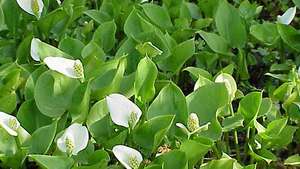
Water Arum is a perennial that grows in clumps, in moist soils and shallow water. It flowers from May-July and grows 1' to 2' high. Water Arum produces a white flower with glossy, oblong, heart-shaped green leaves. In late summer into the fall, it produces a cluster of red berries that are nutritional for ducks. Plant prefers cool, boggy wetland and pond edges. Stems creep or float and the height at maturity is 12"-18". Plant in full shade.
Blazing Star

Blazing Star creates a tall striking focal point by lakes and ponds. Native to damp prairies, Marsh Blazing Star has stiff stems clothed in fine leaves with elegant spikes of dense lavender flower heads in mid-summer. Grows approximately 3 - 4 feet in height. Plant in full sun, well-drained soil spaced 12 - 15 inches apart. The plant tolerates poor soils and will tip over if soil is too rich.
Blue Lobelia
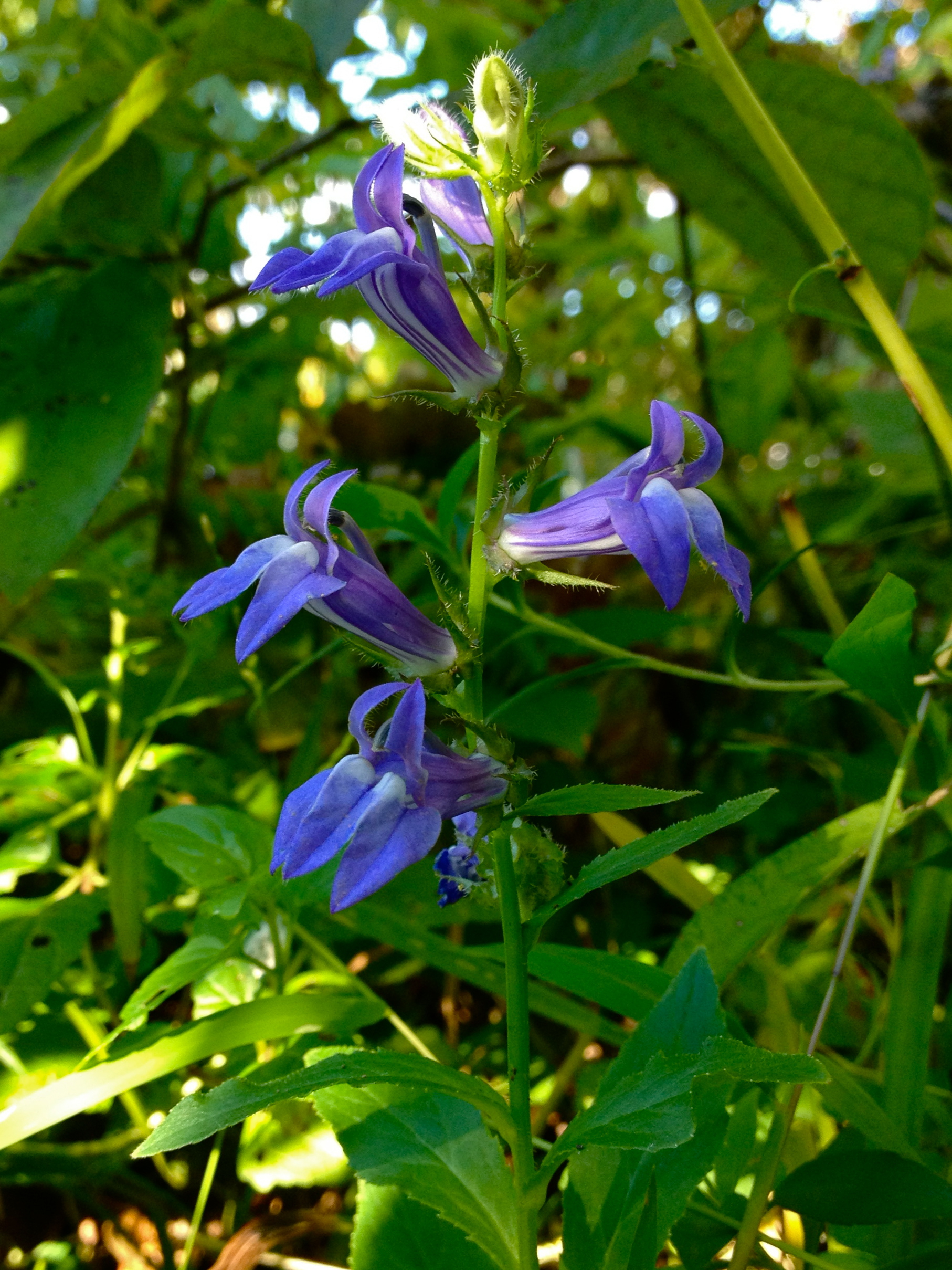
Blue Lobelia produces spikes of blue flowers in late summer - fall, attracting butterflies, hummingbirds, and pollinators to your shoreline. Unlike most other wildflowers, Blue Lobelia does well in shade, but prefers full to partial sun. Grows up to 2 - 3 feet tall and in small clumps.
Blue Vervain
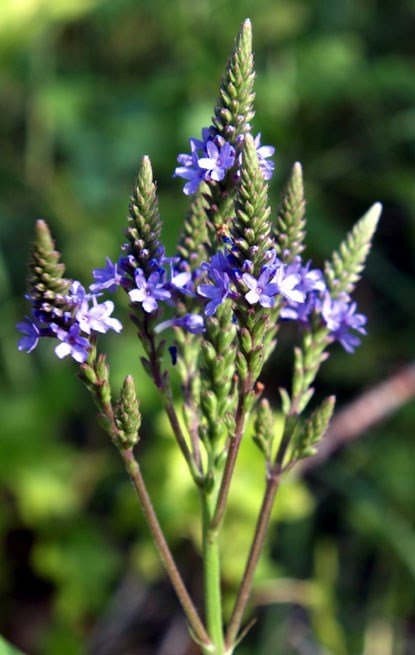
Deep blue flower spikes grace Blue Vervain from July - September attracting a variety of butterflies. Plant Blue Vervain along the sides of streams, pond edges and in other damp soils for a burst of blue in late summer. The tiny seeds grow easily in open, rich soil. Grows 3 - 6 feet tall in full sun.
Boneset
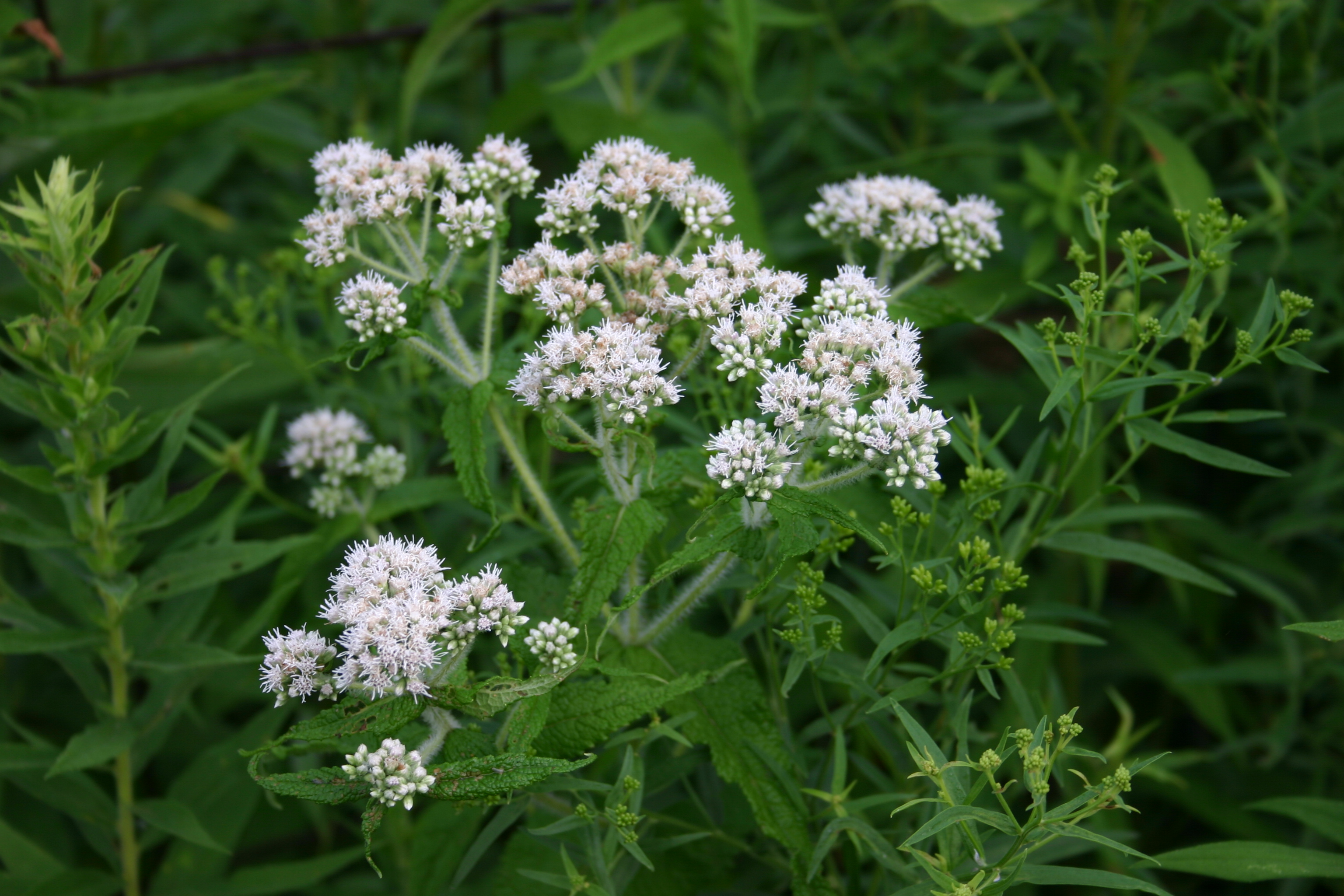
Boneset is a member of the sunflower family (Asteracea) and is native to the eastern two-thirds of the U.S. and Canada. The flowers are grayish-white and bloom mid-August through September.
Bulrush
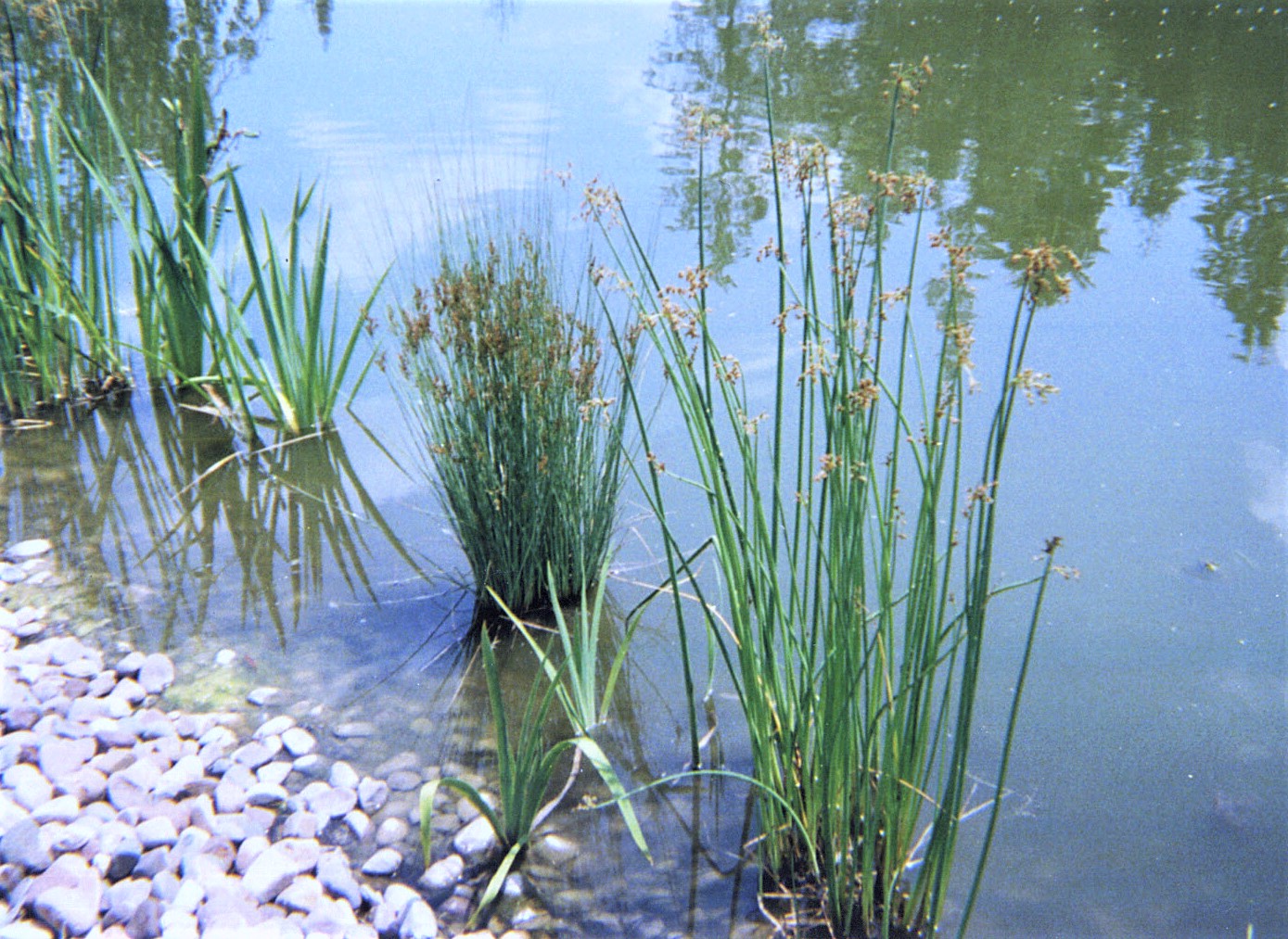
Rushes grow best along shorelines with firmer sediments like clay, sand, or gravel. Spike rush grow best in shallow water, just off shore. Bulrush will grow in water up to 3 feet deep. Rushes extend above the water from 1 to 8 feet depending on the variety. They consist of mainly thin, stiff stems rising from a dense root cluster, and have small seed nodules either along the stem or at the end.
The dense roots of rushes provide excellent shoreline stabilization. The plants are durable, attractive, and provide good shallow water cover for waterfowl, birds, and fish.
Rushes are planted using root stock which are embedded in desirable areas and allowed to grow into dense stands.
Bur-reeds
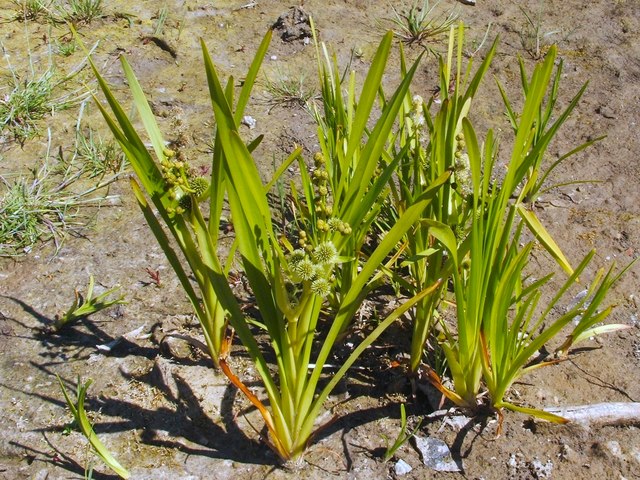
Bur-reeds are distinguished by their graceful grass-like leaves, zigzag flower stems, and round, spiny seed heads arranged like beads on a string. The long slender stems resemble cattails but are not as tall. This attractive shallow water plant grows from tubers which are planted in spring or summer. It is used to stabilize shorelines and acts as a natural filter to water entering a pond or lake. Bur-reed grows 3 to 4 feet tall and provides habitat for birds and animals.
Chara
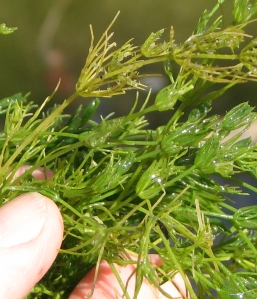
Chara is typically found in clear, hard water. Lacking true stems and leaves, chara is actually an algae. Unlike rooted plants, chara receives its nutrients from the water column. this makes it an idea competitor for available nutrients that undesirable algae require. Once established, chara can help to reduce turbidity that is caused by suspended particles and planktonic algae. Chara is sold by the bucket and is planted by simply throwing it in the water. It will grow in any part of the pond that receives sunlight.
Coontail
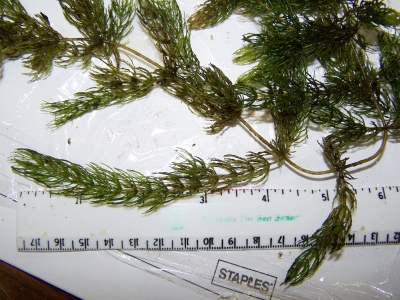
Coontail receives its name from the bushy ends that resemble a raccoon's tail. Like chara it does not have true roots. It's a good plant for reducing problematic algae as it takes in phosphorus from the water. Coontail is a great addition to a pond or lake but needs to be managed so it does not become excessive.
Joe Pye Weed
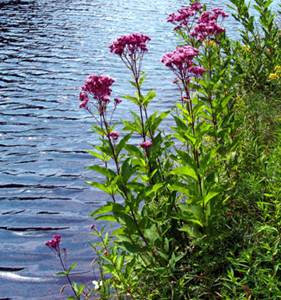
Joe Pye Weed is crowned with clusters of pink flowers in late summer. The whorls of textured foliage add beauty to any setting. Bumblebees are fond of roosting on the flowers on cool September nights. Grows up to 6 feet tall in full sun.
Large Leaf Pondweed

Large-leaved Pondweed is a submerged plant consisting of a thick, durable stem with oblong leaves up to 8 inches long. It grows in clear water up to 20 feet deep, but most often is found in depths of 3 to 12 feet. In late summer the plant will rise to the surface and grows a short seed spike several inches above the surface. This plant provides excellent habitat for fish which feed off insects found among its leaves. It also provides excellent cover when planted in deeper areas near drop-offs.
Marsh Marigold
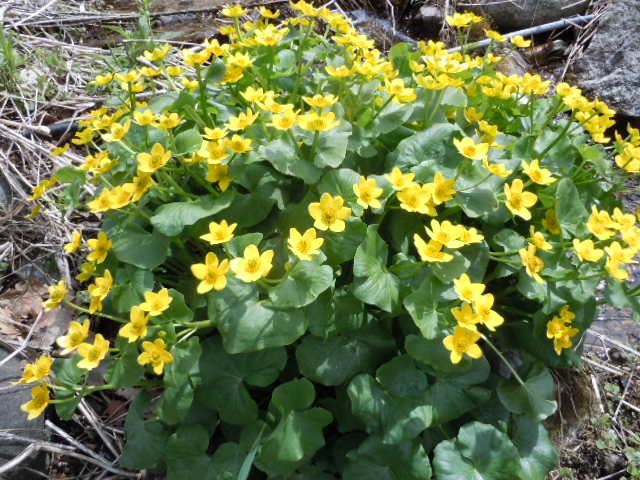
Marsh Marigold is one of our earliest spring blooming wildflowers. This species, with its heart-shaped, rounded and slightly toothed leaves, offers bees one of their first nectar sources each year. Blooming when night-time temperatures can drop below freezing. This plant grows in shade to full sun, reaching up to 2 feet in height.
Marsh Milkweed
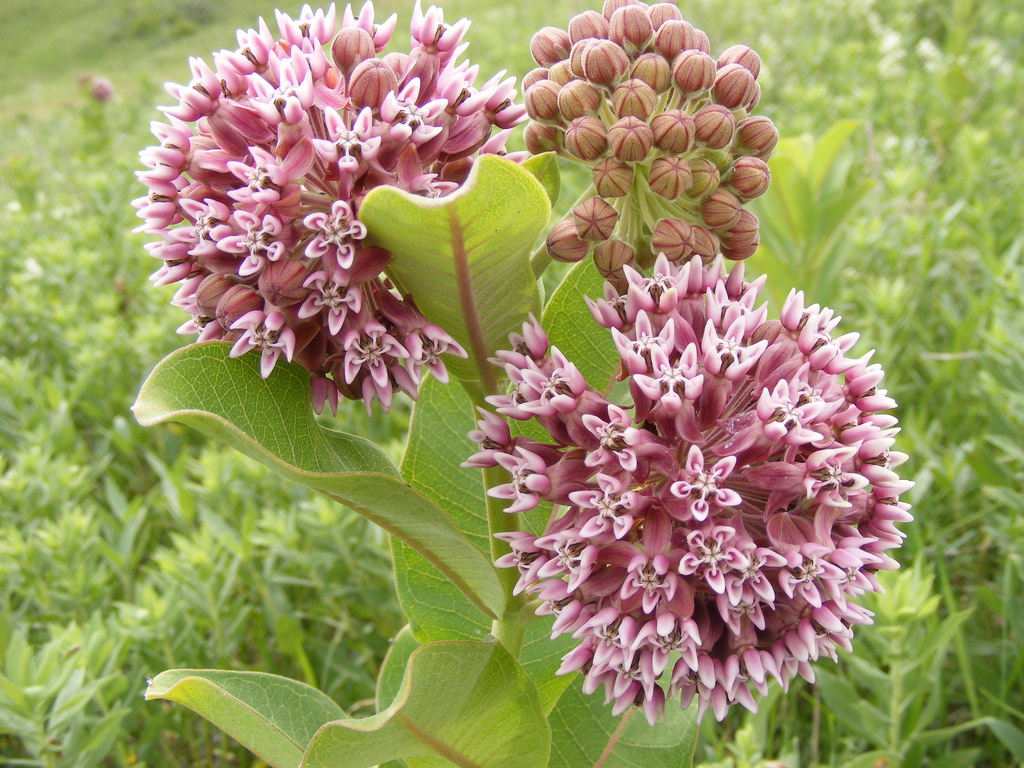
Marsh Milkweed is a favorite host plant for the monarch butterfly caterpillar. Attractive, rounded clusters of delicately scented pink flowers grow from smooth-stemmed branches. Marsh Milkweed plants grow quickly, typically blooming June through August. Grows to 5 feet tall.
Marsh Phlox
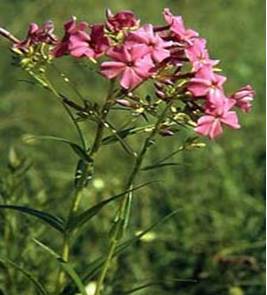
Marsh Phlox This rare beauty is unveiled with its deep reddish-purple flowers in early summer. Marsh Phlox grows 2 - 4 feet tall in full to partial sun.
Monkeyflower
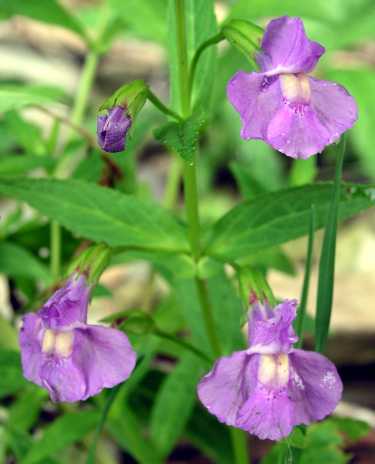
Monkeyflower is a member of the snapdragon family. This plant is covered with blue flowers in late summer - early fall. This is one of the few plants that grows 6 inches - 3 feet tall.
Obedient Plant
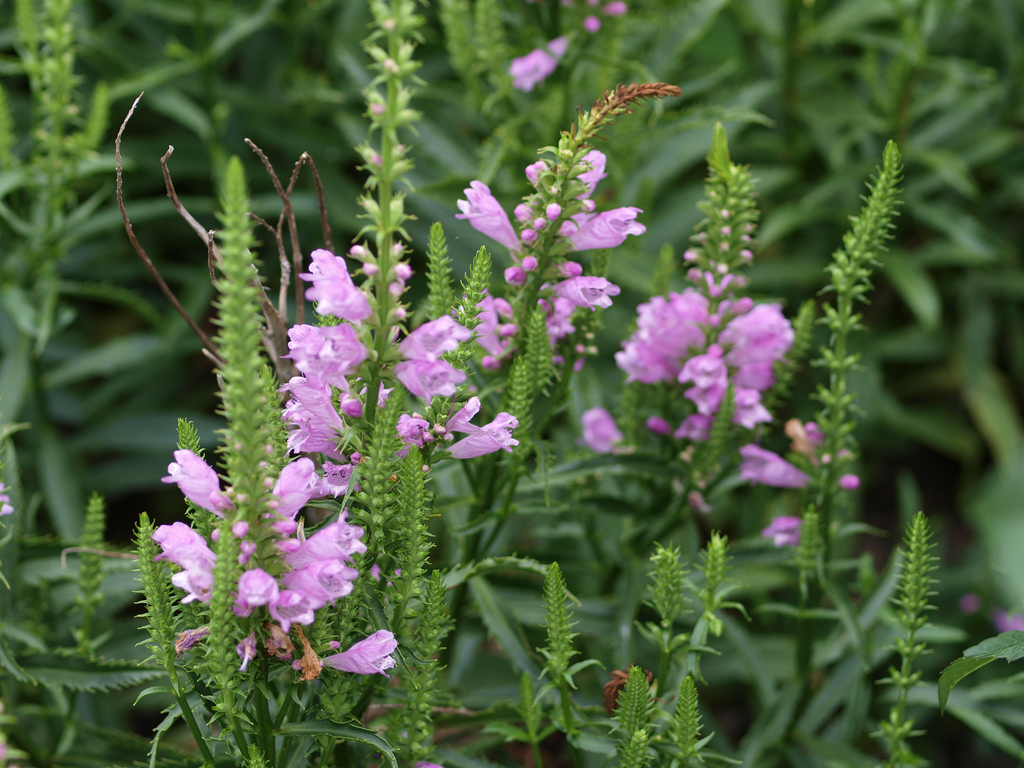
Obedient Plant is a showy member of the mint family, possessing masses of bright pink flowers in late summer - early fall. Makes an excellent ground cover. Grows 1 - 2 feet tall.
Pickerel Plant
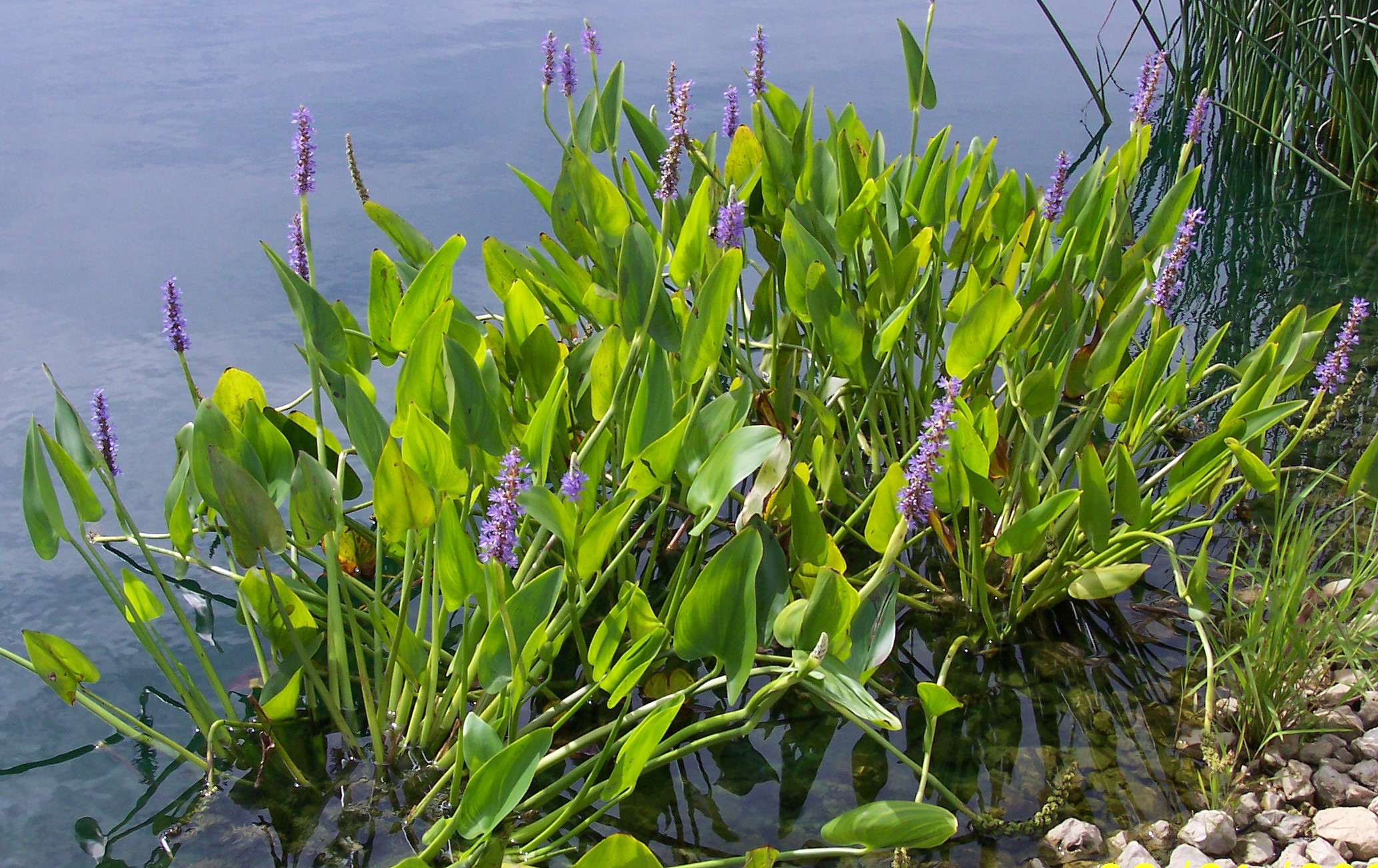
The Pickerel Plant is excellent for fish and waterfowl cover and as a food source. Large arrowhead leaves are dark green and glossy with purple flowers grown on tall spikes. Mature plants grow up to 4". Very ornamental. Can plant in 1 to 12" of water. They do well in partial shade. Seeds are eaten by waterfowl.
Porcupine Sedge

Porcupine Sedge This short sedge provides food for many species of wetland birds and adds a touch of greenery to a moist area or wet meadow. Blooms June - August. Grows 1- 3 feet tall in full sun.
Water Smartweed
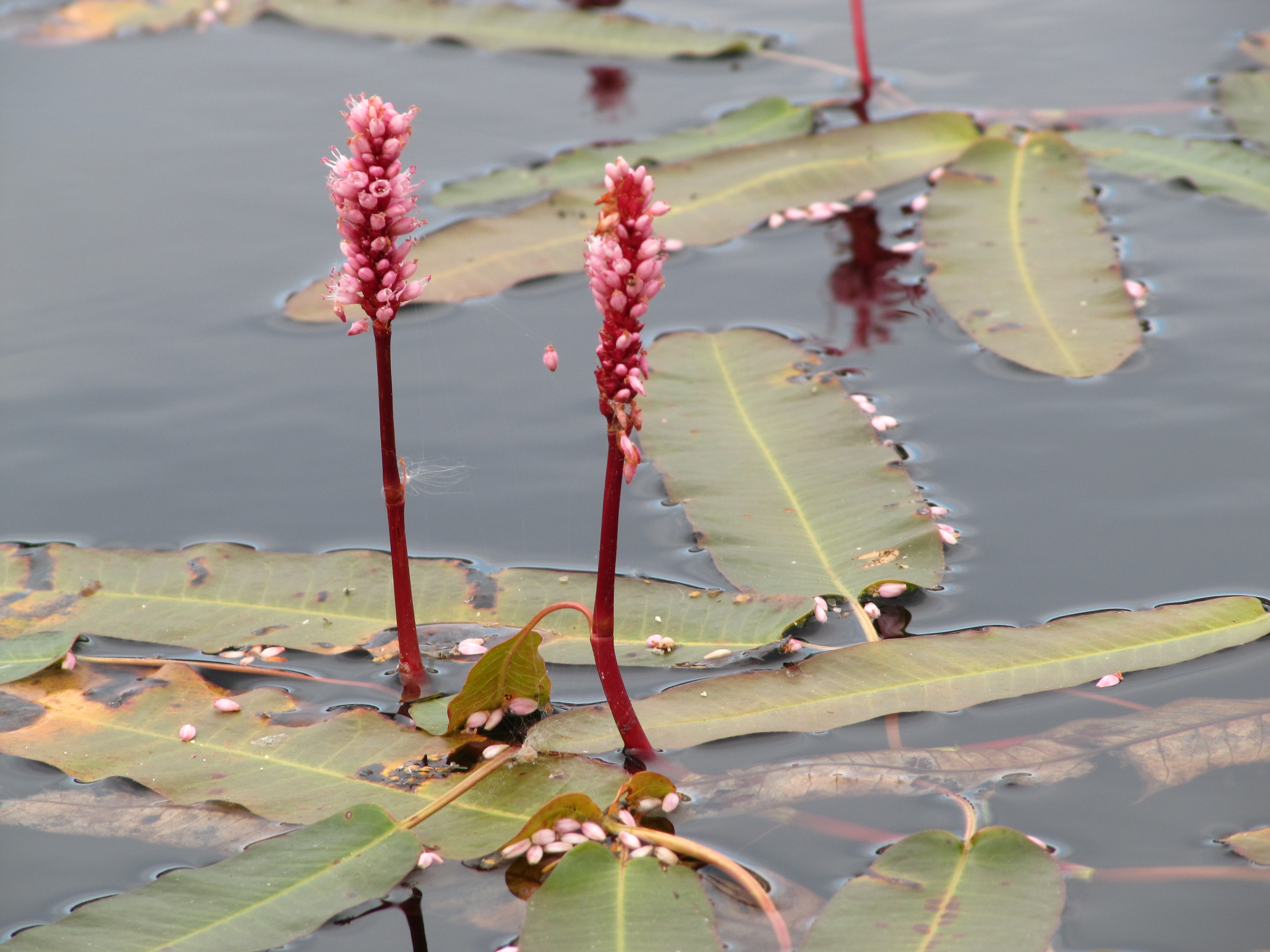
Water Smartweed has dark green, shiny, leathery leaves which grow on alternating sides of the stalk. The pink flower stalk with a cluster of flowers blooms between July - September. Water smartweed aids in preventing erosion while providing a food base for puddle ducks. Grows 6 inches tall. For optimum growth plant in one foot of water or less.
Water Iris
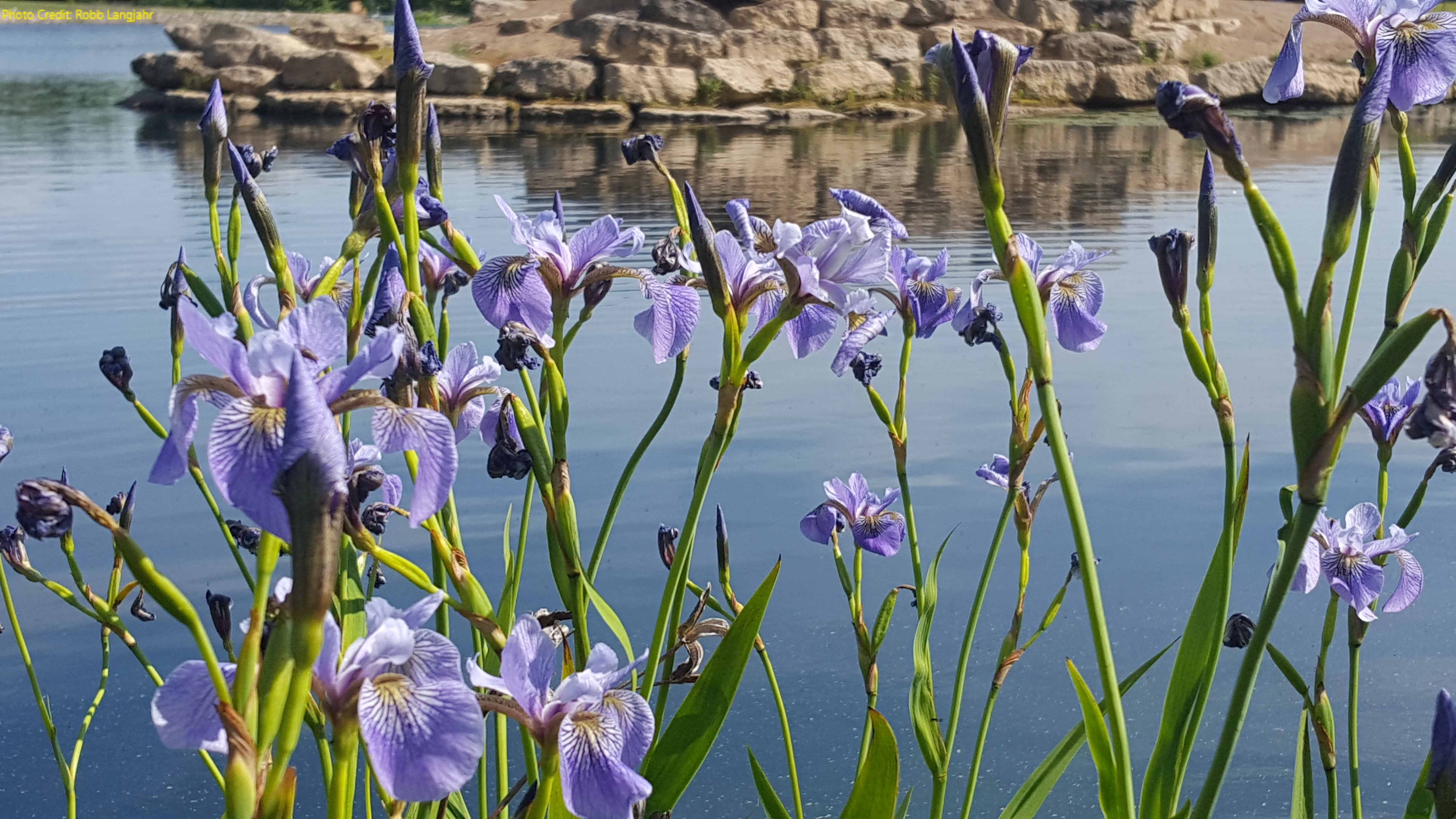
Blue Water Iris have very ornamental seasonal flowers and are used for shoreline borders on ponds, lakes, and streams. Water irises are used for beautification but have the added benefit of providing excellent shoreline soil stabilization and wave buffer zones for erosion protection. Water Iris also provide habitat for waterfowl, birds, and animals. Yellow water iris is listed as an invasive species in Wisconsin due to its ability to quickly spread.
Water Iris prefer wet marshy areas but does well on most bank areas if there is sufficient water. Plants can withstand short periods of drought. Both iris and sweet flag grow with part of their corm, or heavy root stock, uncovered - the same as garden iris. Water iris should be planted during cool periods whenever possible.
Water Lily

White and Yellow Water Lilies have thick tubers which sprout leaves and ornamental flowers that float to the surface on narrow stems. Both types grow best in shallow, sheltered areas of 1 to 4 feet of water, with soft sediment bottoms. The white lily prefers shallower waters than the yellow. Water lilies are planted as habitat areas for fish which are attracted to the cover and the insects the plants provide. They are also very ornamental and grow a large white or yellow flower which can make shallow open water more attractive.
Wild Celery
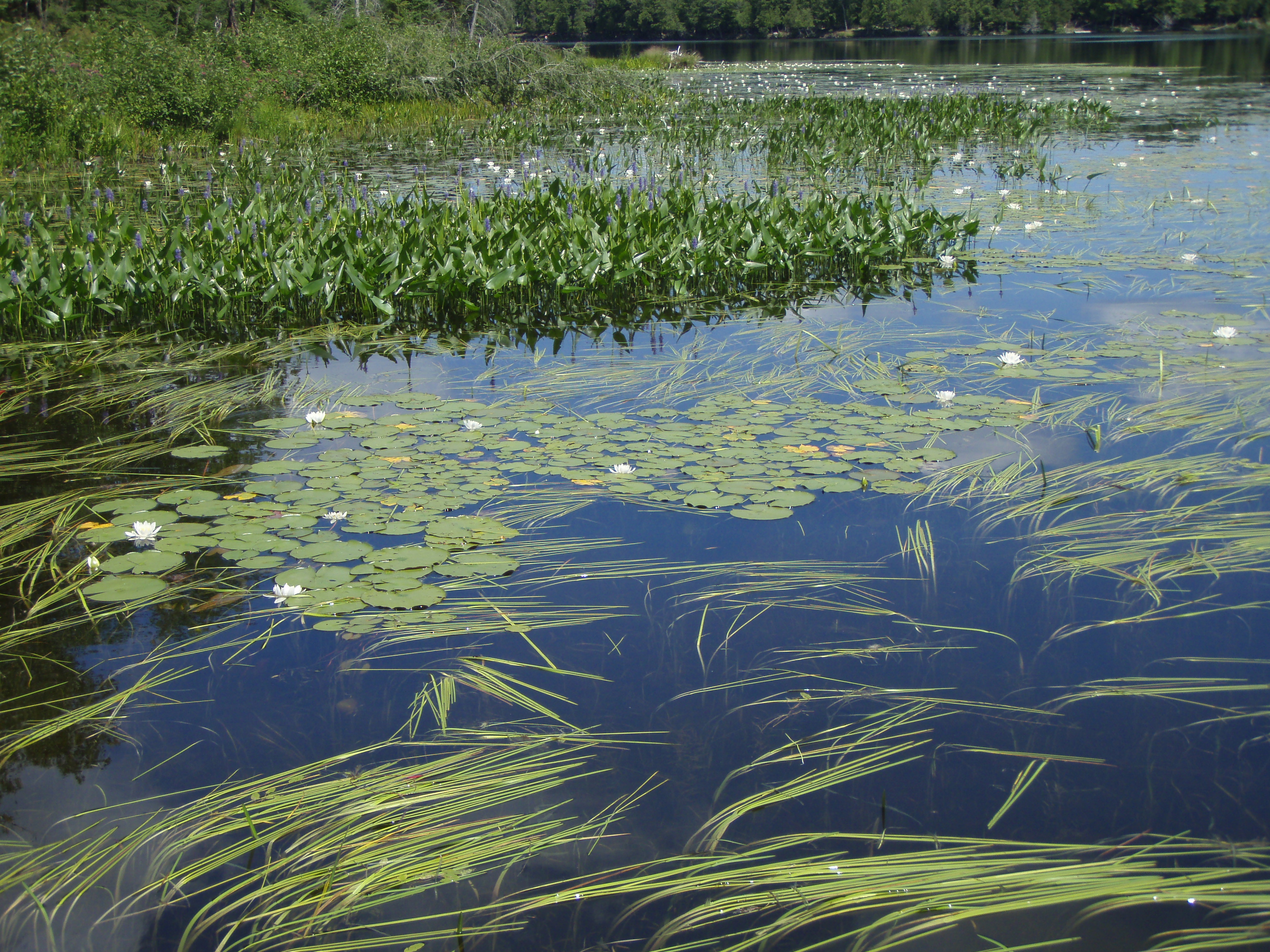
Wild celery is a predominantly submerged plant which grows narrow succulent leaves from 1 to 7 feet in length. Toward the end of summer, the leaves emerge and lay flat on the surface. The plant can be identified at this time by the spring-like stem holding the submerged seed head. Wild celery grows best in shallow open water areas with full sunlight where it can take root in soft bottom sediment. Wild celery provides an excellent source of food for waterfowl and fish. Both will feed on the aquatic insects attracted to its leaves. Waterfowl will feed on all parts of the plant. Additionally, wild celery provides excellent cover for fish.
